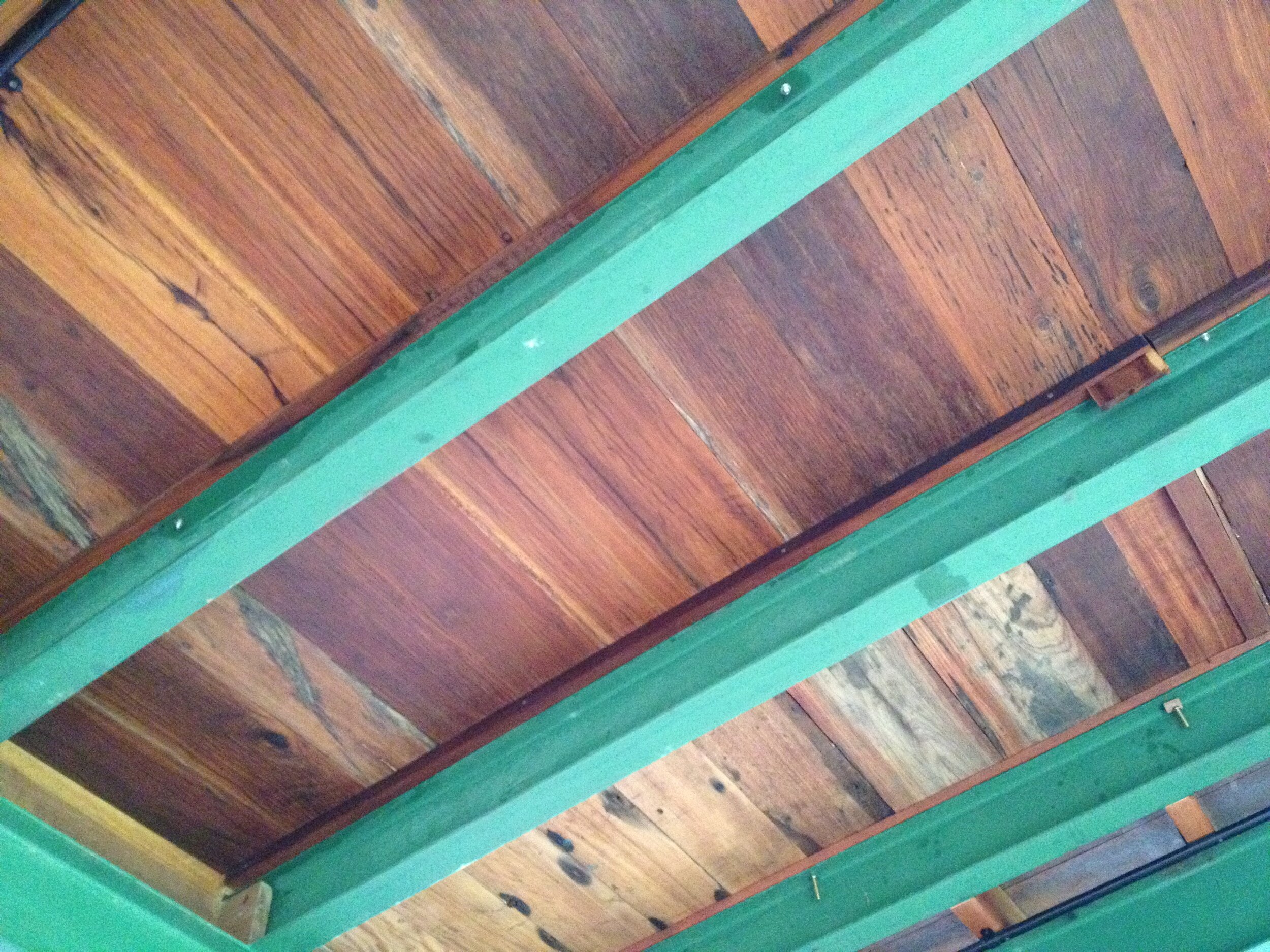Reclaimed wood flooring is beginning to make a mark as an essential consumer option in historical home renovations, commercial building and new construction. As the green movement is making waves in the world, reclaimed wood has become the ideal construction material for the environmental-friendly contractor. There are some reasons why majority of the builders are leaning towards reclaimed wooden floors:
Under side of a mezanine, Kaltimber project
Clean Manufacturing: Steel products produces almost 25% the amount of harmful chemicals as compared to wood product. On the other hand, concrete leaches an enormous deal of carbon dioxide.
Wood needs less amount of energy to be manufactured. Brick takes more than four times the energy, concrete will need about six times and steel at about forty times the energy to manufacture as compared to wooden floors. Basically, wood practically conserves energy. It would take about fifteen inches of concrete to equal the insulation qualities of just about an inch of wood.
Wood certification is a living trend. Guidelines on cutting harvested trees emanated during the early 80s and spawned tree plantations of teal and several classes of Mahogany such as woods. Another output was forest certification emanating from European region. At this point, almost 15 percent of the earth’s forests are certified and regarded as sustainable; bulk of it are in the European region, and significant amount lies in the North American Region. The rest goes all over the globe.
The quandary is that a lot of the certified forests are in the Boreal Forest locations where we are already maintaining the forests since time immemorial, and not in the rain forests. Studies were made, with the use of satellite data to scientifically justify where deforestation is prevalent.
Recycling is the nucleus of reclaimed wood. River-recovered tree logs were lost once and presumed to be useless but in truth, it is perfectly preserved. Beams during the industrial revolution warehouses are another excellent source. Existing wooden flooring systems have an extended life span and can be recycled. A lot of antique floors are in homes of the 19th century and are still usable as we speak. They showcase enormous design intricacies and the appeal of an old flooring can be comprehensively transformed with faux finishes, inlays, and stains.
Happiness and Health: Wooden floors are considered a healthy selection. They contain few chemical compounds in cleaning as compared to other floor coverings and they are not a dust collector; they also do not trap molds or fumes in the grout or fibers. Wood is an excellent choice for people with allergies. Depending on the underlayment or subfloor, a wooden floor can be better for your joints and spine. Wood showcases a little play on your legs and feet, more or less depending on the installation type. As green construction has become prevalent, a lot of products are available with certified green backers and faces.
Reclaim floorboards and Kaltimber wall panel in this luxury Hong Kong office


